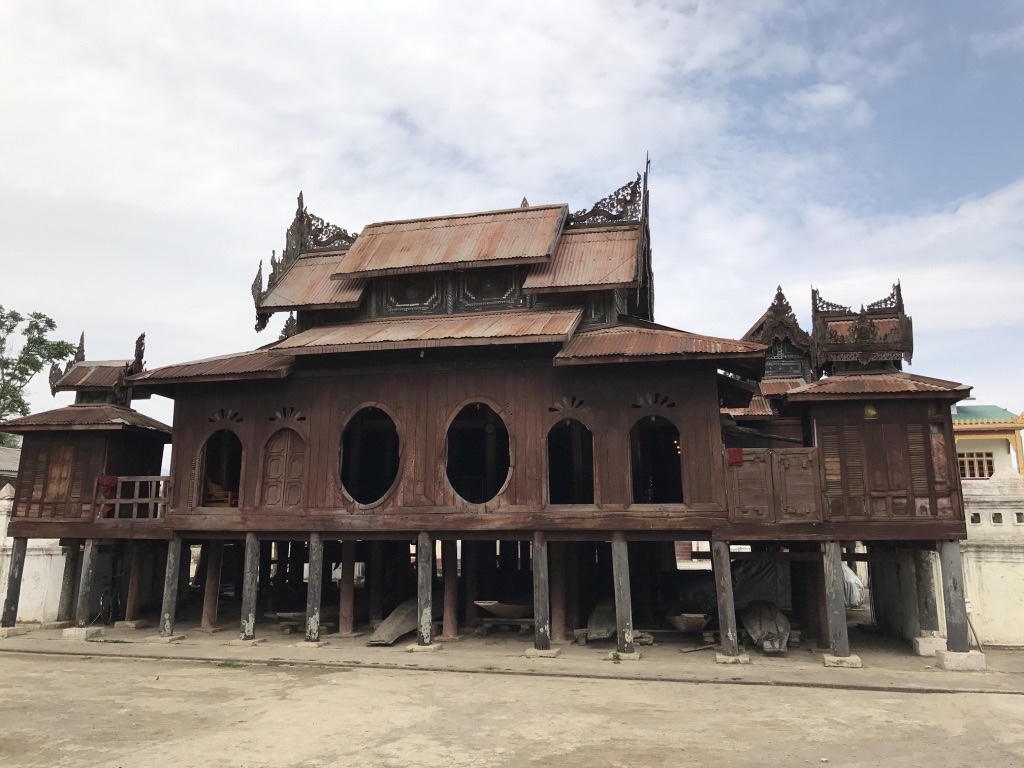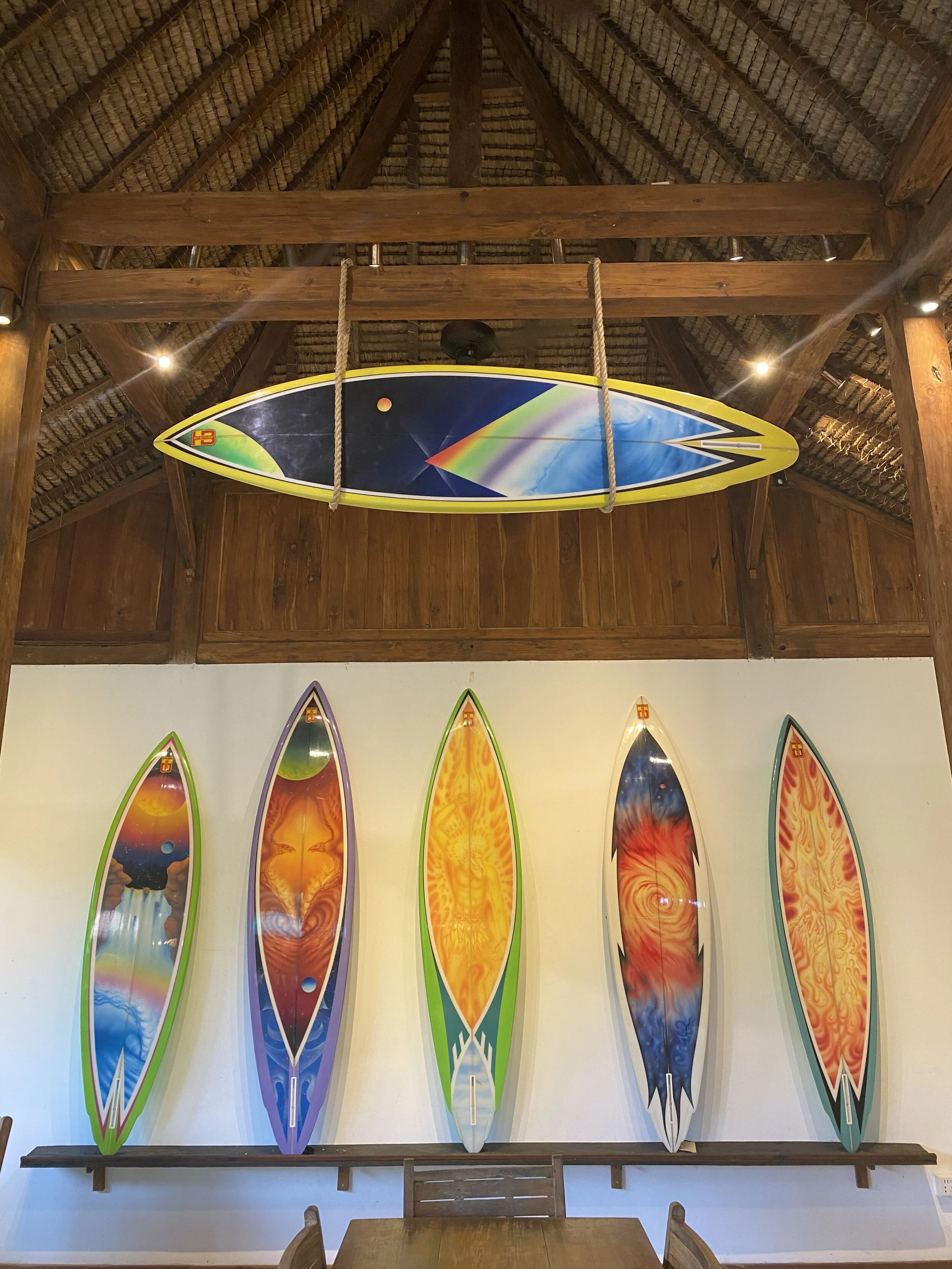Myanmar. April 21, 2017
We entered Myanmar in Mandalay, the old royal capital of Burma, a two hours flight from Bangkok, where we met our Burmese guide Ye Yint Kyaw. Ye [Yay] led us through this unique country which had been subject to a long period of inaccessibility and left relatively untouched by the outside world. Its beautiful landscapes and colorful cultures have remained refreshingly unspoiled.
From Mandalay, we sailed on the Ayarwaddy Discovery down the Irrawaddy River to Bagan. This relaxing two-day cruise was perfectly timed, allowing the team to recoup from jet-lag. In Bagan, we explored this beautiful ancient city of 10,000 pagodas for a couple days. A quick flight took us to the amazing Inle Lake where we stayed for 3 days. It was time for the beach and after another short flight, we landed in Ngapali Beach where we enjoyed the Indian Ocean on a deserted beach for three days. We ended our Burmese adventure in Yangon for a quick stop on our way to Hanoi.
1) The Irrawaddy River:
Before embarking on our boat in Sagaing, Ye took us on top of Sagaing Hill to visit the Thirty Caves Pagoda with its thirty different entry arches and 45 Buddha statues. The first of many pagodas to come!
Life onboard of the Ayarwaddy Discovery was sweet as we quietly sailed downstream one of the three main rivers of Asia. Our Captain, Lyn, and is crew were the nicest people and took very good care of us.






Our first stop was at Yandabo Village on the river bank to visit a pottery making community. The entire village is focusing on the production of potteries that are sold all over Myanmar.
Along the river we crossed different boats and barges, some of them were amazing concoctions like these never-seen-before gold-digger rafts, sorts of catamarans, that fascinated so much Rocco.
On the second night, the crew anchored on a sandy beach in front of Bagan nearby the Bupaya Pagoda. This was the spot where we stayed for two days and from which we launched our daily expeditions to the discovery of this magical place and its famous temples, returning in the evening for happy-hour on deck and watch the sunset.





2) Bagan:
Bagan, formally Pagan, was the capital of the Pagan Kingdom. During the peak of the Pagan Dynasty, between the 11th and 13th century, over 10,000 temples, pagoda and monasteries were built.
Unfortunately, Bagan is located in an active earthquake zone and has suffered from many earthquakes over the ages damaging many temples. Today, only 2,229 temples and pagodas remain but the ones still standing are of incredible beauty and we could spend weeks admiring their unique design and construction.









Among the many temples we visited, we were particularly impressed by the Shwegugyi Temple, the Ananda Temple, and the Thatbyinnyu Temple.
As we drove in the van Ye had reserved for us in Bagan, we came to realize that all the Burmese cars have the driver seat located on the right side of the car like in the UK but the Burmese people drive their cars on the right side of the road like in the US or France. Why on earth would the Burmese combined these to impractical opposites?
Tiziano Terzani had the answer (refer to the previous Southeast Asia Post to learn about Terzani): Like the Thais, the Burmese believe that fate is not ineluctable, that even if a misfortune is forecast it can be averted: not only by acquiring merits (good deeds, donations to the temple, etc..) , but also by bringing about an event which is similar in appearance to the predicted calamity, thereby satisfying the requirements of destiny, so to speak. The General Ne Win, who took power in 1962 and imposed a military dictatorship in Burma, was told by one of his trusted astrologers to beware of a grave danger: a sudden right-wing uprising which would lead to his deposition. Ne Win gave orders that everyone in Burma immediately had to drive on the right-hand side of the road rather than the left, as had been the rule since the British times.The whole country was thrown into confusion, but this "right-wing uprising" fulfilled the prophecy after a fashion, and the real revolt was averted. Welcome to Asia!
A great example of Burmese stupas is the Shwezigon Pagoda located in Nyaung-U, a town near Bagan. This pagoda, a Buddhist religious place, is believed to enshrine a bone and tooth of Gautama Buddha.



The Shwezigon pagoda is very impressive not only due to its large gold leaf-gilded stupa but it carries a particular significance thanks to all the exquisite smaller temples and shrines surrounding the main stupa. Beautiful unrestored statues, wood carvings and murals have survived the multiple earthquakes.
Ye decided to give us a break from the pagodas, temples and religious sites from the past and show us a more contemporary side of Bagan: The local market. The colors and people were just amazing. The more we were discovering Myanmar, the more we were falling under its charm.
3) Inle Lake:
Inle Lake, located in the Shan State, is probably one of the most fascinating place we ever visited. We embarked on a powered pirogue, a cool boat that will be ours for the next three days, in Nyaungshwe township on the Northern tip of the lake. Our hotel was located 30 minutes by boat from Nyaungshwe..
The Villa Inle Resort and Spa is a beautiful hotel. Tucked on the eastern shore of the lake and surrounded by untouched nature, our very comfortable villas offered perfect views over this unique scenery. From our bed we could watch the fishermen on their boats in the distance, the water buffalos cooling themselves and a large variety of birds feeding in the wetlands right in font of us.
One of the most striking scenes you witness as you first arrive in Inle Lake is the fishermen in action. Never have we seen before such grace and original technics deployed to catch fishes. Some of the fishermen fish, casting a net with their hands, while advancing their boats in a circular fashion standing up on one leg and rowing with the other. Other fishermen use cylindrical wooden traps casting them with one leg and one arm while plunging a spear with the opposite hand trough the trap onto their prey. They all make it look so easy that it resembles a perfectly choreographed dance of upmost beauty. And it works!








On our way from Heho airport just before arriving to Inle Lake, we had stopped at the Shwe Yaunghwe Kyaung, a beautiful ancient teak monastery with its unique oval windows and magnificent carved wood ceilings.
Our first stop on the lake was for a delicious lunch at the Inle Heritage located on the southern tip of the lake. Inle Heritage is a not-for-profit organisation that preserves the cultural and natural wealth of the Inle region, and helps it to thrive as a place to visit, work and live. They offer lodging, classes on local cooking, the culture and the traditional architecture of the lake. Among many contributions to the region, they were instrumental in reviving the Burmese cat breed which was close to extinction. We enjoyed the real Inthar and Shan cuisine with recipes handed down by Inle’s grandmothers. A must stop!
After lunch, we headed to the weaver's village where we visited the Ko Than Hlaing Silk and Lotus Weaving Company and learned about the process of weaving lotus fibers into delicate and colorful frabric.
Life on Inle Lake is different, all houses are on stilts to accommodate for the frequent floods, there are no streets and no cars we could see, only waterways and boats. Each turn taken uncovered another beautiful scene, one after the other, we were speechless as we traveled on our pirogue from a village to the next.






The Shwe Indein Pagoda site is located on the West bank of Inle lake, also known as the Thousand Pagodas, this Boudhist religious site near the Indein village and market counts over one thousand stupas in various states of repair.







Very sad to leave Inle Lake, we could have definitely stayed longer in this magical place. But vamos a la playa.....
4) Ngapali Beach:
Ngapali Beach is one the most beautiful beaches we have ever enjoyed. Our hotel, the Amara Ocean Resort, was another great location recommended by Charles Babault who did a fantastic job in putting together our Myanmar tour. Being the end of the season, right before the monsoon, we had the hotel - and the beach - for ourselves. Fancy bungalows facing the Indian Ocean with our feet literally in the water. The weather was perfect: hot but not humid. Paradise!!!
Sunset on the Indian Ocean
Few hundred meters from our bungalows, right on the beach, we found this charming bamboo cabana / restaurant, Silver Wave, serving fresh lobsters, shrimps and fishes. This became our dinner place in Ngapali.
We went there every evening but not before enjoying our sunset drinks.
Ngapali Beach was the perfect spot to recharge before our next destination: Vietnam
On our last day in Ngapali, we woke up before sun rise to go watch the fishermen returning from a night long fishing. Quite a production.....
5) Yangon:
A few hours layover in Yangon Airport on our way to Hanoi gave us the opportunity to go visit the Shwedagon Pagoda. Charles' wife, Nee Nee, welcomed us at the airport, we drove through the center of Yangon and visited the famous pagoda after a quick lunch at Monsoon.





Bye-Bye Myanmar
On to our next stops!































































